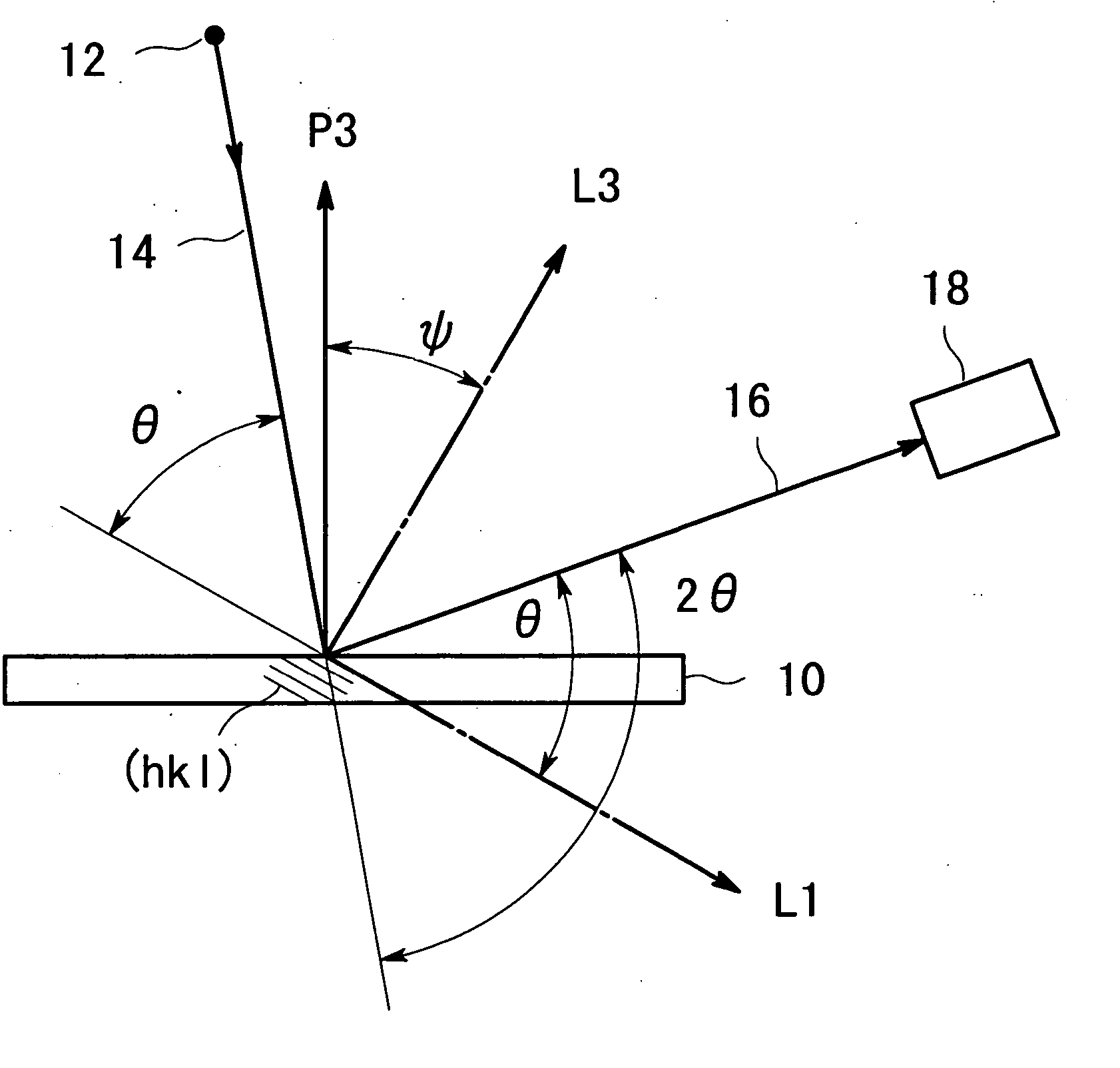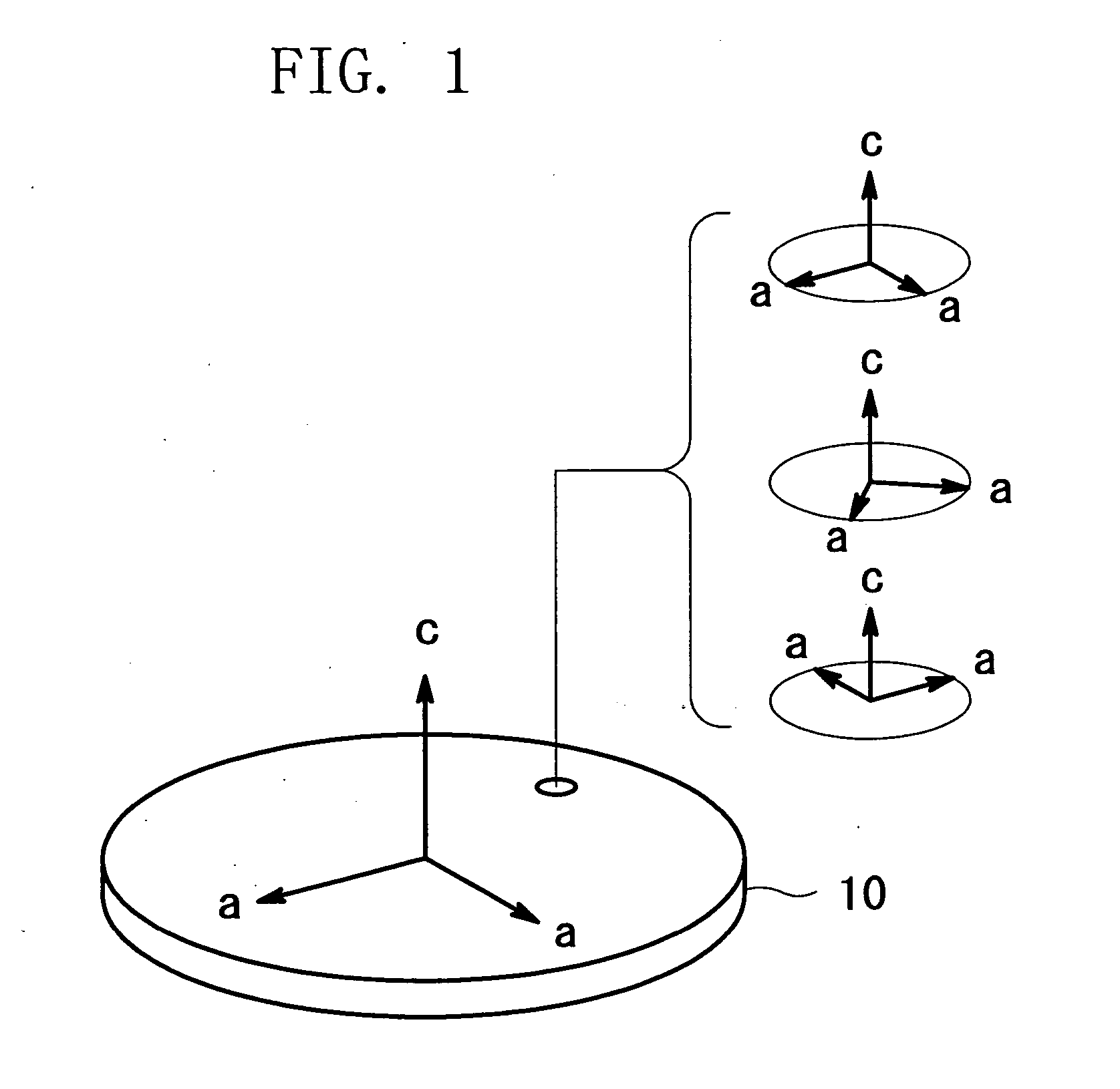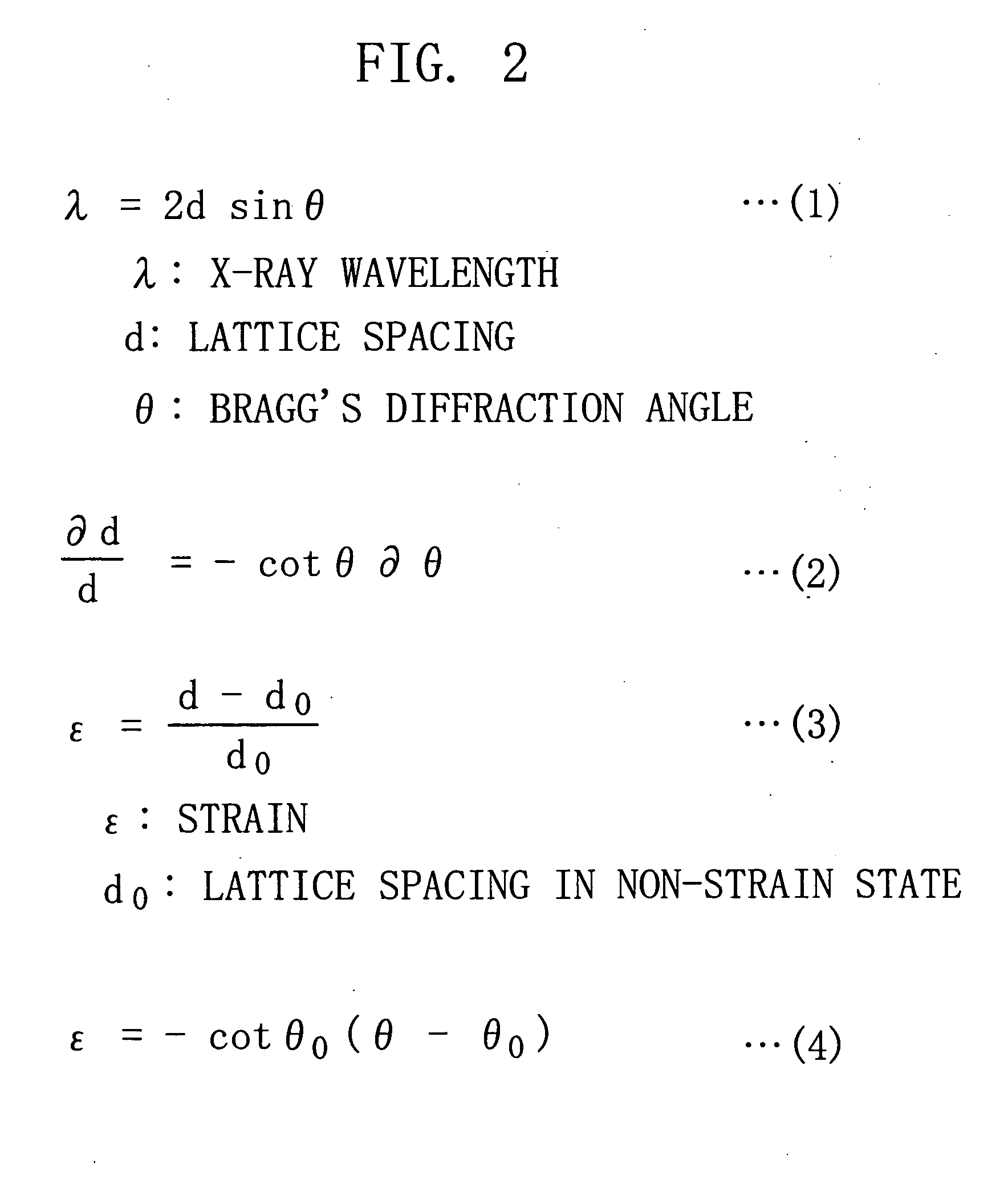Stress measurement method using X-ray diffraction
a stress measurement and x-ray diffraction technology, applied in the direction of force measurement by measuring optical property variation, material analysis using wave/particle radiation, instruments, etc., can solve the problem of no stress measurement method more precise than the conventional sinsup>2/sup> method, and achieve the effect of precise stress measuremen
- Summary
- Abstract
- Description
- Claims
- Application Information
AI Technical Summary
Benefits of technology
Problems solved by technology
Method used
Image
Examples
Embodiment Construction
[0032] Referring to FIG. 1 illustrating a c-axis-oriented specimen of a tetragonal polycrystal, most of many crystal grains which are present in the vicinity of the surface of a specimen 10 have the c-axes of the tetragonal system perpendicular to the specimen surface. The remaining two axes (since these are equivalent to each other, both axes are referred to as a-axes) of the crystal axes of the tetragonal system are present within a plane parallel to the specimen surface. With respect to the c-axis-oriented specimen, in general, directions of the two a-axes are random, and randomly oriented crystal grains are mixed with each other. Such a c-axis-oriented specimen is the target for measurement of the present invention.
[0033] The principle of the stress measurement using X-ray diffraction will be briefly described with reference to the formulae shown in FIG. 2. Formula (1) is the Bragg's equation representing the diffraction condition of X-ray. Under the assumption that the wavelen...
PUM
| Property | Measurement | Unit |
|---|---|---|
| angle | aaaaa | aaaaa |
| lattice constant | aaaaa | aaaaa |
| stress | aaaaa | aaaaa |
Abstract
Description
Claims
Application Information
 Login to View More
Login to View More - R&D
- Intellectual Property
- Life Sciences
- Materials
- Tech Scout
- Unparalleled Data Quality
- Higher Quality Content
- 60% Fewer Hallucinations
Browse by: Latest US Patents, China's latest patents, Technical Efficacy Thesaurus, Application Domain, Technology Topic, Popular Technical Reports.
© 2025 PatSnap. All rights reserved.Legal|Privacy policy|Modern Slavery Act Transparency Statement|Sitemap|About US| Contact US: help@patsnap.com



